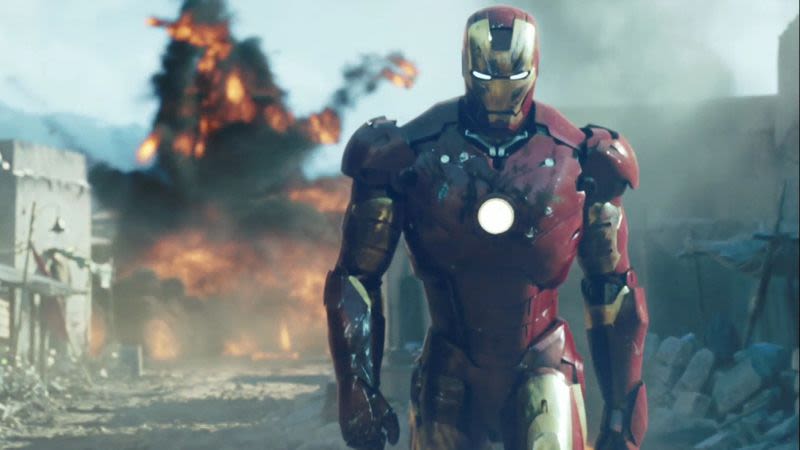To celebrate a decade of Marvel movies, Jorge goes back to the movie that started it all...

On May 2nd, the original Iron Man celebrated the 10th anniversary of its release. The film as the first official movie of Marvel Studios and the one that kick started and eventually allowed the completely transformed film landscape of today. It is now ten years, eighteen films, and a multibillion-dollar acquisition later.
So to celebrate (or condemn; whatever side of the argument you land in), let’s go back to the screenplay for the movie, and examine how scripts describe and develop action scenes; sequences that mostly rely on visual cues rather than description or dialogue...
Iron Man
Written by: Mark Fergus, Hawk Ostby, Art Macum & Matt Holloway
Based on the Iron Man characters by Stan Lee, Larry Lieber, Don Deck & Jack Kirby
[You can read the whole script here. I will be talking about this scene.]
As hard as it may be to recognize sometimes, action movies also start out with a script. Even if big part of their appeal relies on spectacle set pieces, everything has to be written down first. This is not to say that action sequences cannot be a compelling or essential part of a well-told story, but since most of it relies more on the visual aspects of film, it can be tricky to set it down effectively into the page.
The climactic battle sequence in Iron Man that takes place in Gulmira showcases a series of devices that writers often use to depict these types of scenes: clear and concise sentences that follow a storytelling structure, use of angles and cuts to show the geography and pace of the action, and boiling down the story into smaller elements.
Dialogue is usually minimal in these kind of sequences, and only included in sparse parts. Everything must be conveyed visually through action lines and descriptions: where the characters are, where they move to, and what happens around them. The script for Iron Man keeps these elements very simple, using short and straight forward sentences that explain action very concisely. Iron Man does X. He flies towards Y. He is hit by Z.

***

Battle scenes tend to be hectic, rapid moving, and overstuffed with action (and this is just with one superhero. Imagine doing one with over a dozen on screen at once!). They are rarely static, as characters move from one place to the other, or we follow several different characters in different locations doing different things. To establish the rapid pace, Iron man uses devices like focusing on the specific angle of a scene (like inside Iron Man’s suit, for example) to focus on a specific part of the action.
Additionally, in the same way that montages serve as a compilation of smaller scenes to establish the passage of time, the script compiles a series of action lines rapidly intercut between them in the style of a montage to smoothly establish the different moments that take place within a same sequence.

***

***

Finally, the storytelling of the script remains simple in that it focuses solely on the plot-points that need to happen on screen, without worrying about all the additional things that will visually and emotionally elevate the scene in the final product, like background actors and action, special effects, and choreographed movements and fights.
The audience sees and experiences much more during the battle, but the script just mentions details like the information that is conveyed through a screen, on an alarm that goes off for Tony Stark. The rest of the blanks will be filled later on, and the emotion and adrenaline will undoubtedly be turned up with the addition of music, sound and CGI. But the script remains focused and specific within the story.

***

Boiling down a mostly visual and frenetic action sequence into the lines of a script is a much more complex process than it may initially seem like. All the pieces have to fit together and flow smoothly so that they can be properly translated from the pages of the screenplay, to set, to post-production, to the theater.
Now, this is something screenplays should always be able to attain. But when a film includes thousands of dollars in special effects, a cast of digitally enhances superheroes, explosions, metallic suits, and some sort of magical stones (I don’t follow the Marvel universe closely), the more specific the words in the script can be, the higher the heroes will soar.